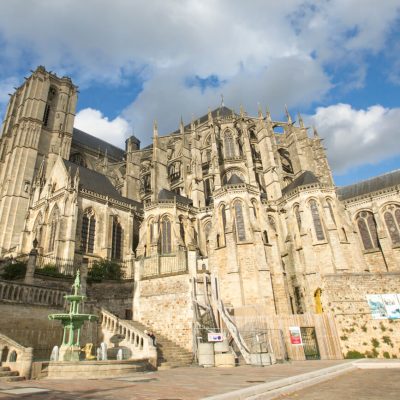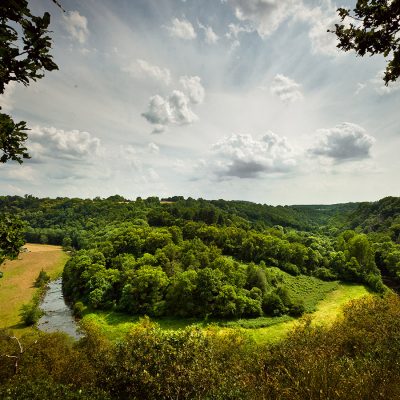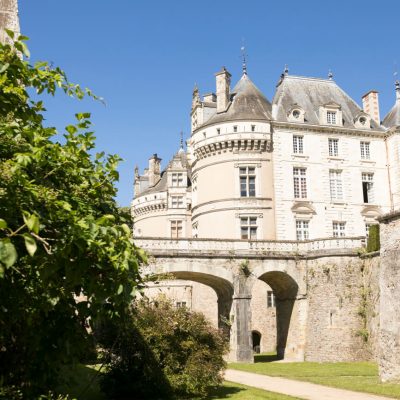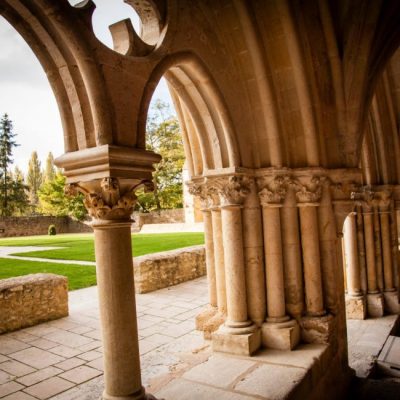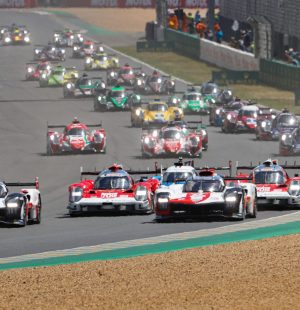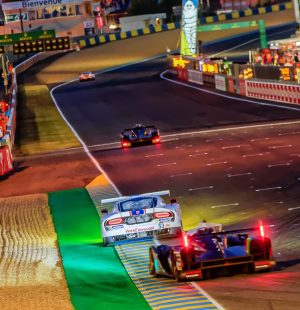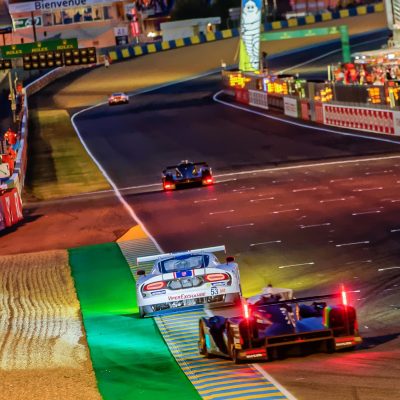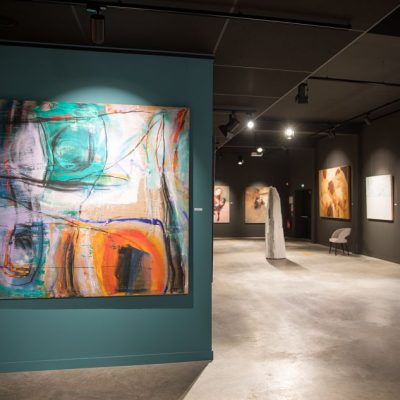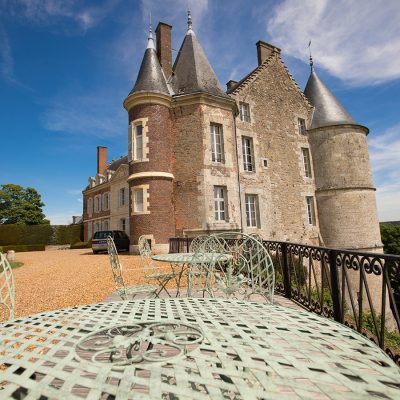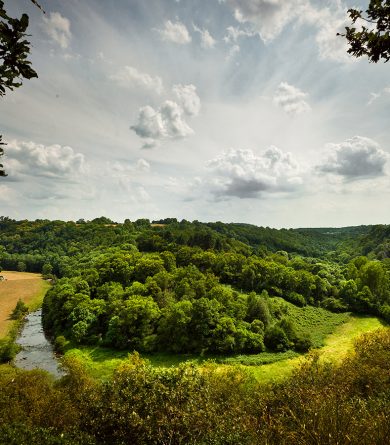On the banks of the Sarthe river, on the heights of Le Mans, the Cité Plantagenêt promises a journey through time. Surrounded by a powerful Gallo-Roman wall, it has preserved a remarkable group of half-timbered houses nestled in a maze of pretty cobbled streets.
A Roman enclosure unique in the world
The imposing Gallo-Roman wall of Le Mans stands proudly around the Cité Plantagenêt. Built between the 3rd and 4th centuries, it surrounded the old Vindinum (Latin name of the city of Le Mans) for more than a kilometre! For more than fifteen centuries, it protected the historic heart of the city.
The Roman enclosure today preserves a set of 500 meters long punctuated by 12 towers and three posterns. Built in red bricks and Roussard stones, the wall is decorated with polychrome geometric friezes along its entire length!
To admire it, go down the Pans-de-Gorron staircase located just to the left of the Bishop’s Palace on leaving the cathedral or enjoy a boat trip along the Sarthe river.
The enclosure of Le Mans remains the best preserved of all the former Roman Empire, with those of Rome and Istanbul.
Supported by the State, the city of Le Mans is a candidate for the classification of the Gallo-Roman wall as a UNESCO World Heritage Site.
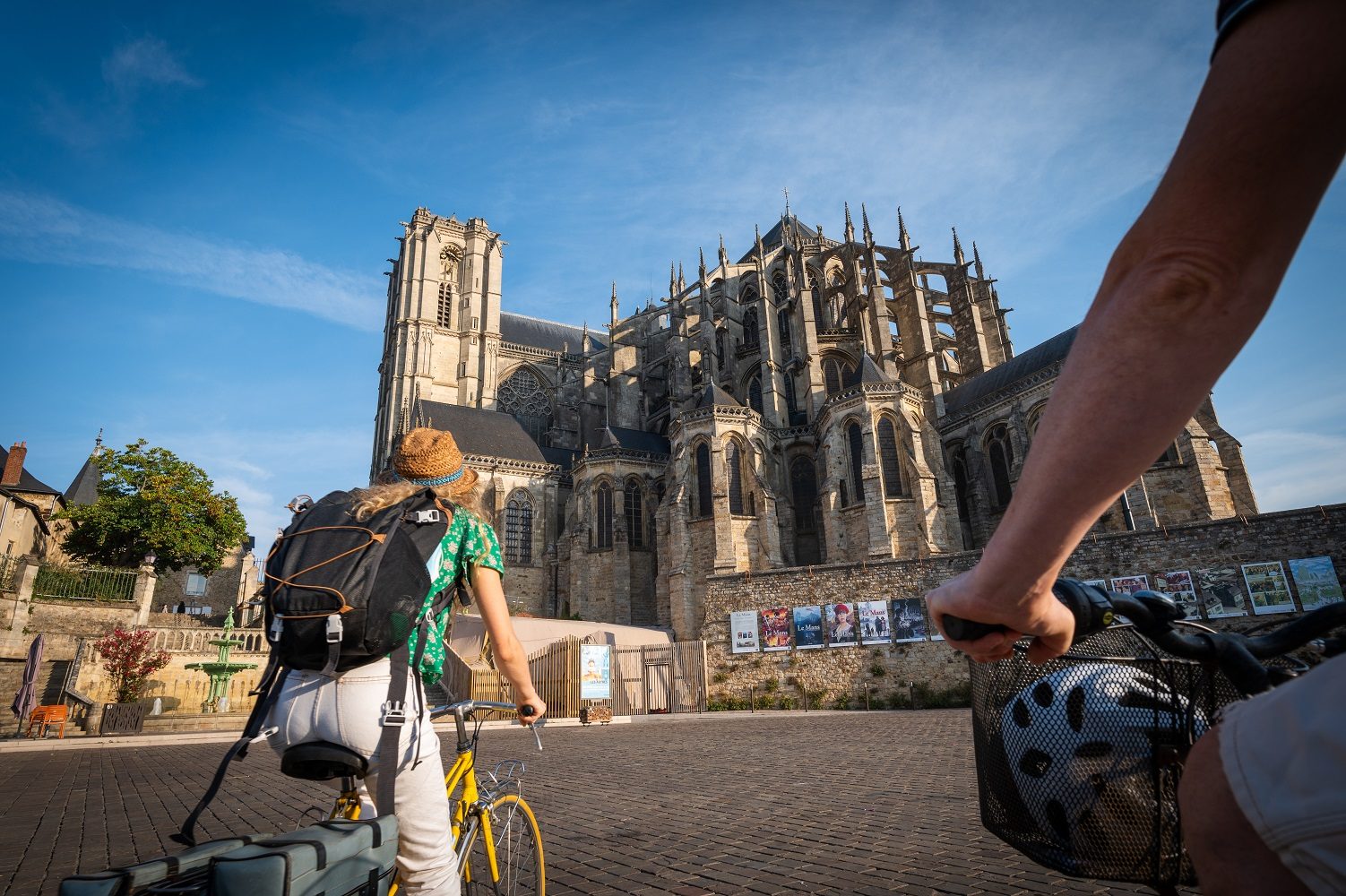
A preserved medieval and Renaissance district
Crowned with the City of Art and History label, the city impresses with its remarkably well-preserved homogeneous 15-hectare complex.
Formerly called Old Mans , the Cité Plantagenêt with its narrow cobbled streets dominates the Sarthe valley. It has around a hundred half-timbered houses, the oldest of which date back to the 15th century.
Take the time to stroll along rue de Vaux with its beautiful houses adorned with rosebushes and wisteria. The Grande-Rue is home to the Pillar aux Clefs, sign of the former locksmith-goldsmith, which remains one of the most beautiful pillar-corners of the city. Don’t miss the double house called “Les Deux-Amis”, or the one called “Drapier” in rue de la Reine-Bérangère .
The Plantagenet dynasty left a lasting mark on the city. Henry II, King of England, was born in Le Mans in 1133. His son, Richard the Lionheart, stayed there while his wife, Bérengère de Navarre settled there. She had the Royal Abbey of Épau built in 1229 at the gates of the city. Today, the historic center bears their name: the Cité Plantagenêt.
The Cité Plantagenêt is regularly used as a set for television and cinema.
Cyrano de Bergerac (1990), The Man in the Iron Mask (1998), Molière (2007), Le Mans 66 (2019) and Eugénie Grandet (2022) were filmed in the old town of Le Mans.
Le Mans Cathedral
Considered one of the most beautiful religious monuments in France, the Saint-Julien cathedral has a long Romanesque nave in the Plantagenet style over 134 meters long. It leads to a Gothic choir surrounded by chapels, including that with 47 musical angels painted under the vaults, a masterpiece of Western medieval painting.
Le Mans Cathedral is also famous for its sumptuous 12th century stained glass windows. The stained glass window of the Ascension dated from the end of the 11th century would be the oldest stained glass window in the world still in place in a cathedral. Outside, don’t miss the Pierre Saint-Julien. This pink sandstone menhir attached to the west facade looks like a woman dressed in a drapery. Legend has it that touching your navel promotes fertility.
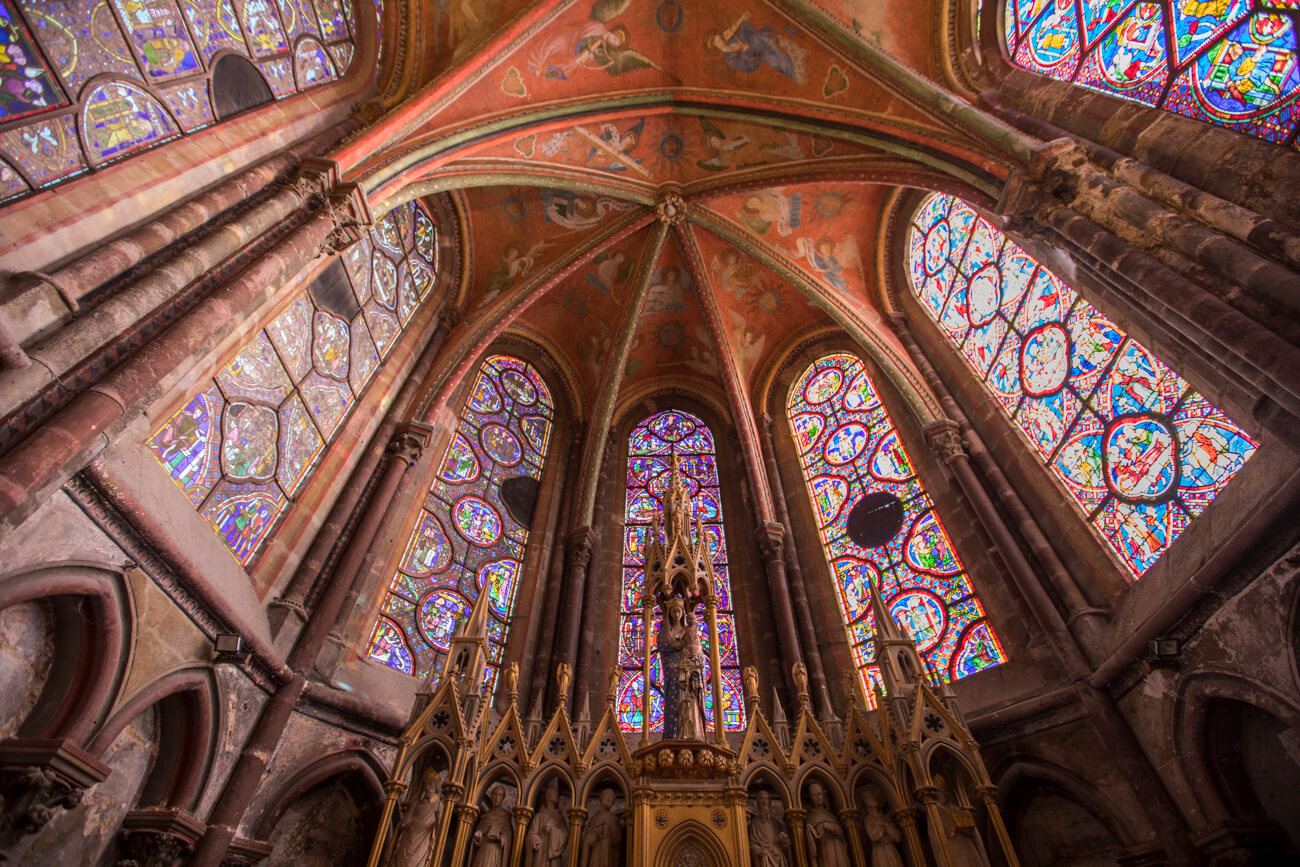
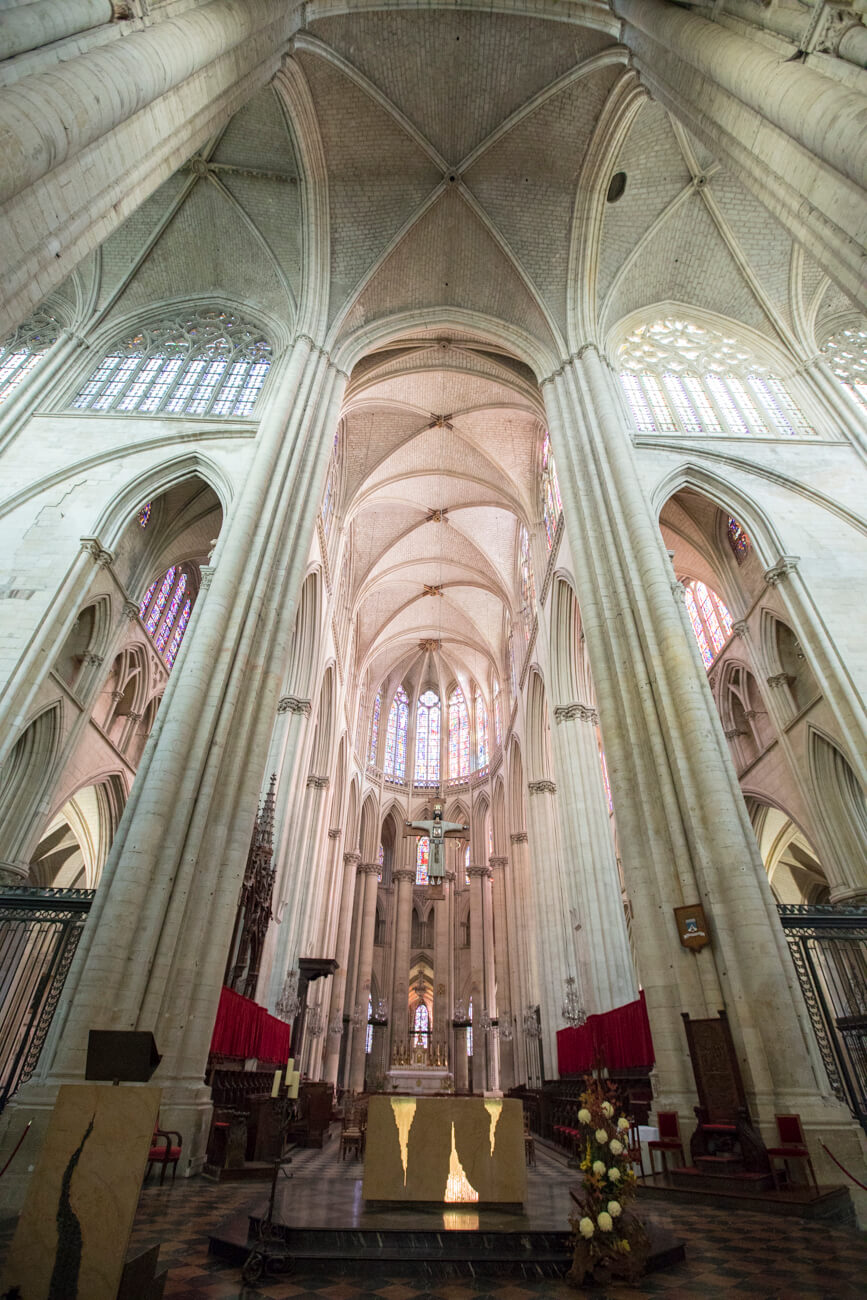
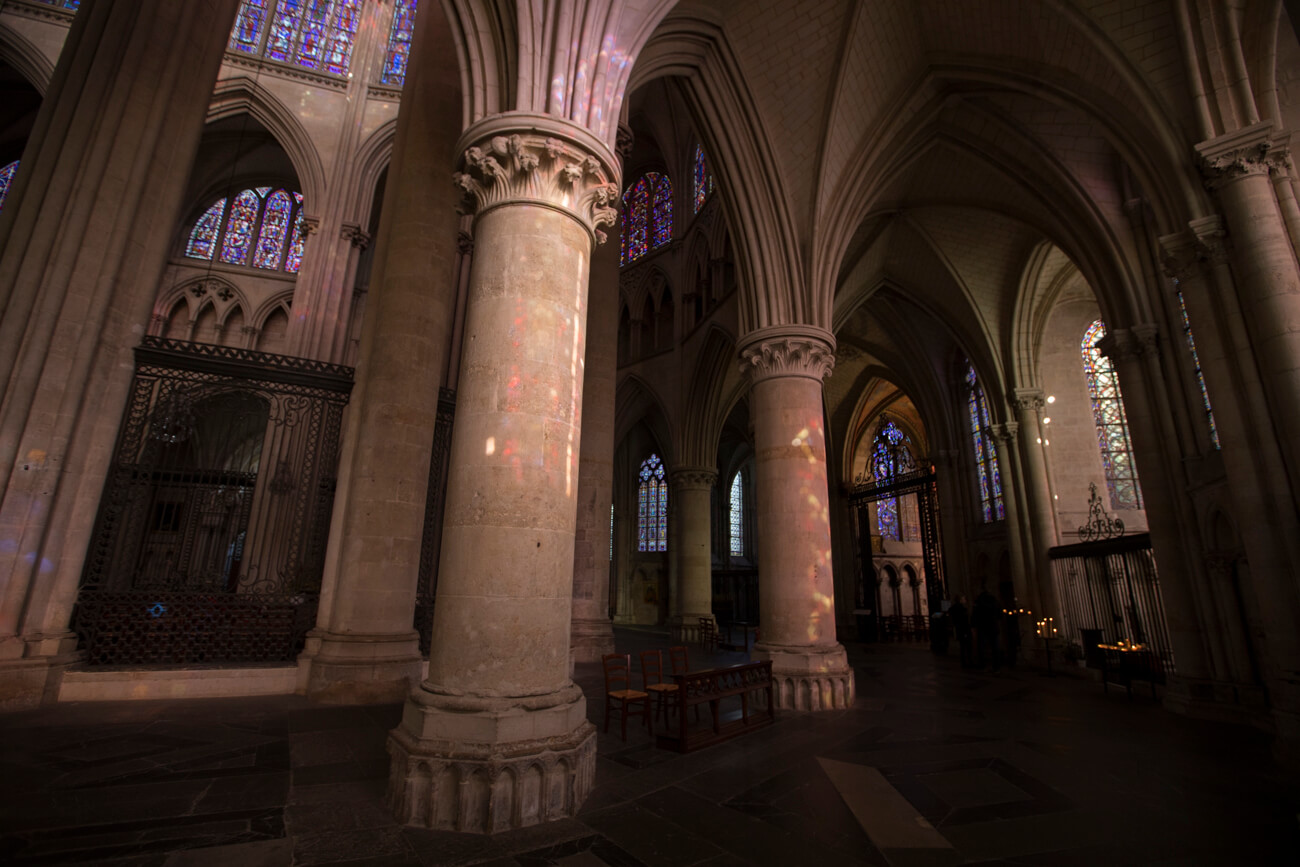
The Night of the Chimeras
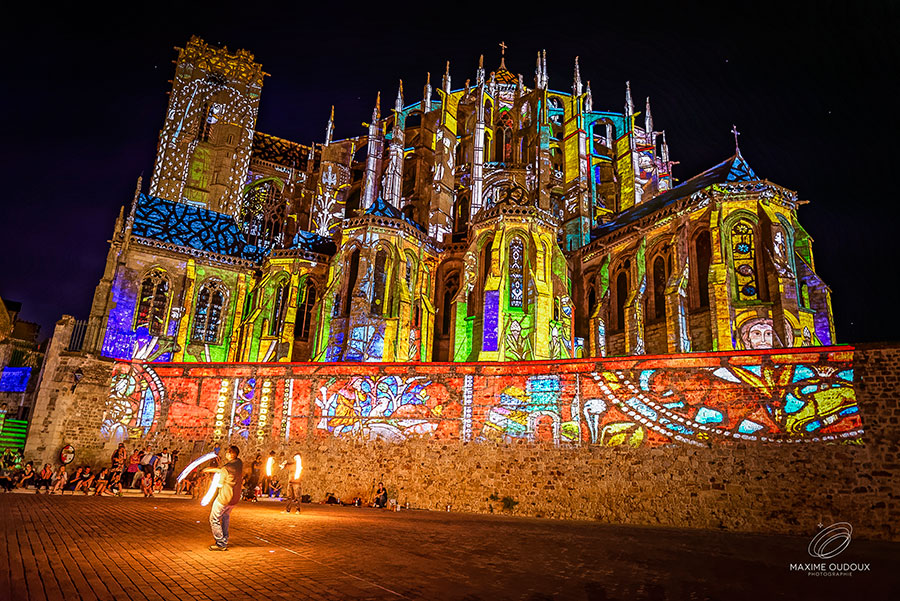
In summer, the Cité Plantagenêt puts on its clothes of light at nightfall. From the cathedral to the wall, passing through the alleys and their facades, the Le Mans heritage becomes a medium for the projection of magical images.

